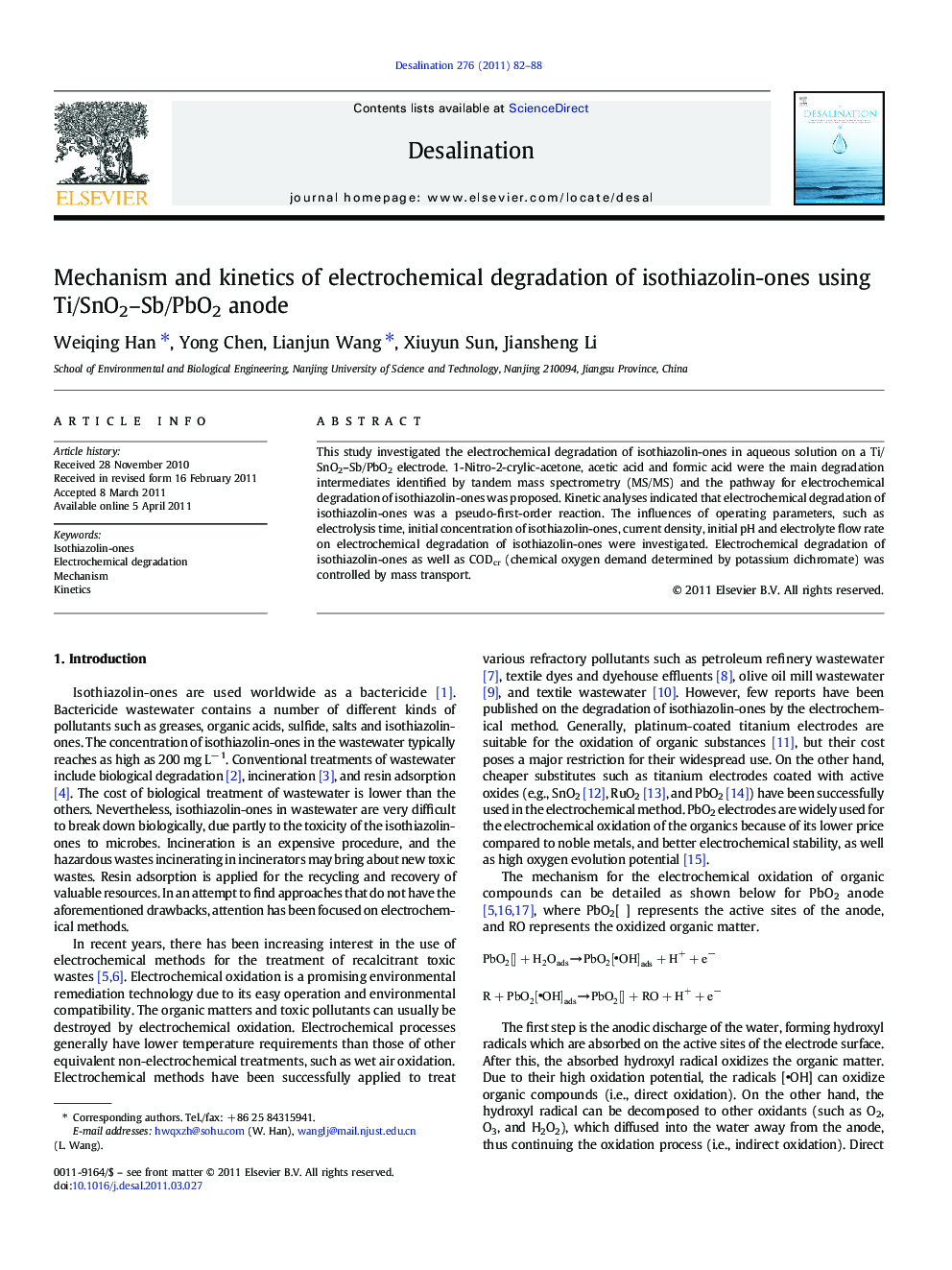| Article ID | Journal | Published Year | Pages | File Type |
|---|---|---|---|---|
| 624828 | Desalination | 2011 | 7 Pages |
This study investigated the electrochemical degradation of isothiazolin-ones in aqueous solution on a Ti/SnO2–Sb/PbO2 electrode. 1-Nitro-2-crylic-acetone, acetic acid and formic acid were the main degradation intermediates identified by tandem mass spectrometry (MS/MS) and the pathway for electrochemical degradation of isothiazolin-ones was proposed. Kinetic analyses indicated that electrochemical degradation of isothiazolin-ones was a pseudo-first-order reaction. The influences of operating parameters, such as electrolysis time, initial concentration of isothiazolin-ones, current density, initial pH and electrolyte flow rate on electrochemical degradation of isothiazolin-ones were investigated. Electrochemical degradation of isothiazolin-ones as well as CODcr (chemical oxygen demand determined by potassium dichromate) was controlled by mass transport.
Research Highlights► Electrochemical degradation intermediates of isothiazolin-one are identified by MS/MS. ► Kinetic model for electrochemical degradation of isothiazolin-one is proposed. ► Operating parameters have a significant effect on the degradation rate constant.
